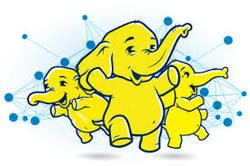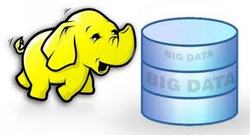
Forrester Research predicted that Hadoop will become a cornerstone of the business technology agenda at most organizations.
Scalability, affordability, and flexibility make Hadoop uniquely suited to change the big data scene. An open-source software framework, Hadoop allows for the processing of big data sets across clusters on commodity hardware either on-premises or in the cloud.
At roughly one-thirtieth the cost of traditional data storage and processing, Hadoop makes it realistic and cost effective to analyze all data instead of just a data sample. Its open-source architecture enables data scientists and developers to build on top of it to form customized connectors or integrations.
Typically, data analysis requires some level of data preparation, such as data cleansing and eliminating errors, outside of traditional data warehouses. Once the data is prepared, it is transferred to a high-performance analytics tool, such as a Teradata data warehouse. With data stored in Hadoop, however, users can see "instant ROI" by moving the data workloads off of Teradata and running analytics right where the data resides.
Other use of Hadoop is for live archiving. Instead of backing up data and storing it in a data recovery system, such as Iron Mountain, users can store everything in Hadoop and easily pull it up whenever necessary.
The greatest power of Hadoop lies in its ability to house and process data that couldn't be analyzed in the past due to its volume and unstructured form. Hadoop can parse emails and other unstructured feedback to reveal similar insight.
The sheer volume of data that businesses can store on Hadoop changes the level of analytics and insight that users can expect. Because it allows users to analyze all data and not just a segment or sample, the results can better anticipate customer engagement. Hadoop is surpassing model analytics that can describe certain patterns and is now delivering full data set analytics that can predict future behavior.
There are few challenges.
Hadoop's ability to process massive amounts of data, for example, is both a blessing and a curse. Because it's designed to handle large data loads relatively quickly, the system runs in batch mode, meaning it processes massive amounts of data at once, rather than looking at smaller segments in real time. As a result, the system often forces users to choose between quantity and quality. At this point in Hadoop's life cycle, the focus is more on enormous data size than high-performance analytics.
Because of the large size of the data sets fed into Hadoop, the number-crunching doesn't take place in real time. This is problematic because as the time between when you input the data and the time at which you have to make a decision based on that data grows, the effectiveness of that data decreases.
The biggest problem of all is that Hadoop's seeming boundlessness instills a proclivity for data exploration in those who use it. Relying on Hadoop to deliver all the answers without asking the right questions is inefficient.
As companies begin to recognize Hadoop's potential, demand is increasing, and vendors are actively developing solutions that promise to painlessly transfer data onto Hadoop, improve its processing performance, and operationalize data to make it more business-ready.
Big data integration vendor Talend, for example, offers solutions that help organizations transition their data onto Hadoop in high volume. The company works with more than 800 connectors that link up to other data systems and warehouses to "pull data out, put it into Hadoop, and transform it into a shape that you can run analytics on.
While solutions such as those offered by Talend make the Hadoop migration more manageable for companies, vendors such as MapR tackle the batch-processing lag. MapR developed a solution that enhances the Hadoop data platform to make it behave like enterprise storage. It enables Hadoop to be accessed as easily as network-attached storage is accessed through the network file system; this means faster data management and system administration without having to move any data.
Veteran data solution vendors such as Oracle are innovating as well, developing platforms that make Hadoop easier to use and to incorporate into existing data infrastructures. Its latest updates revolved around allowing users to store and analyze structured and unstructured data together and giving users a set of tools to visualize data and find data patterns or problems.
RapidMiner's approach to Hadoop has been to simplify it, eliminate the need for end users to code, and do for Hadoop analytics what Wordpress did for Web site building. Once usable insights are collected, RapidMiner can connect the data platform to a marketing automation system or other digital experience management system to deploy campaigns or make changes based on data predictions.
Moving forward, analysts predict that leveraging Hadoop's potential will become a more attainable goal for companies. Because it's open-source, the possibilities are vast. Hadoop's ability to connect openly to other systems and solutions will increase adoption in the coming months and years.

 RSS Feed
RSS Feed
